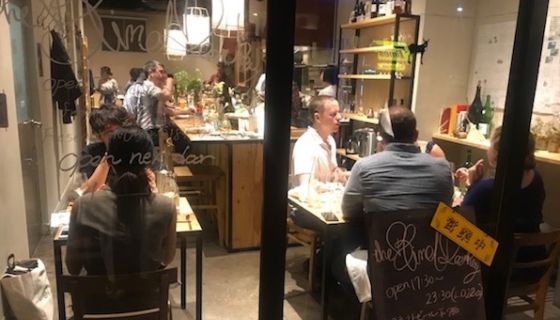The question that readers have most frequently put to me changed significantly during 2019.
What used to be the rather generic ‘What is your favourite restaurant or food?’ has morphed into the far more specialised and thought-provoking question, ‘What do you believe will be the next trend in restaurants?’
I suspect this betrays a growing confidence among readers; everybody today is a food expert. They are also probably searching for something extra. Many readers I meet want to be at the cutting edge of an industry that has become part and parcel of their lives.
This aspect of public concern may well favour the most sensitive restaurateurs, I suspect. In a world whose outlook seems so troubled, customers will be increasingly likely to seek the solace of a restaurant where they will be made to feel extra special.
I have never forgotten the experience of a local London restaurateur after the events of 9/11 in New York. Although business dropped off immediately afterwards, it bounced back very soon, he reported. His customers needed the comfort, the camaraderie, the warmth that only sitting in a restaurant can provide.
So as well as positing that chefs and restaurateurs should stop looking further and further afield for exotic foodstuffs and concentrate instead on training their staff to really look after their customers, I would like to explain where and how this year I have enjoyed the kind of customer experience that I wish would become the norm, everywhere and for everyone.
Over New Year I had my first 2019 experience of this style of service, at a lunch at Marisqueira, a seafood restaurant on the outskirts of Oporto. The spider crab and the octopus rice were the highlights of what we ate but I will never forget Manuel, our waiter. Not too tall and therefore able to look his seated customers in the eye, this is a man who possesses all the essential qualities for his profession: an interest in his customers, a smile, a sense of humour, and, above all, a willingness to please.
Examples of a similar approach to hospitality were to be reproduced in Paris and Brussels by that increasingly rare practitioner, the chef/proprietor.
Each manifests his individual style in a completely different manner. On his website for Amarante in Paris, Christophe Philippe writes, ‘To avoid any mistakes, this restaurant is for you if you like your meat with a little fat on it; if you enjoy your fish and meat not overcooked; if you like butter; if you have a healthy appetite; and if you don’t enjoy Coca Cola.’ These are five good reasons to eat and drink here.
At Bon Bon in Brussels, where Christophe Hardiquest has been cooking for almost as long as Philippe (20 years as opposed to Philippe’s 26), there is a sense of informality in the footwear. Everyone here wears white trainers, ‘a way of bringing informality into my restaurant', Hardiquest explained. In both restaurants the cooking is of the highest standard. But there is in both these restaurants, the all-important, highly personal individual attention to individual customers, too.
This particular direction has of course been best exemplified in the past by a husband and wife team, but this is changing from the husband in the kitchen and the wife as the maîtresse d’ to a more modern variation of marital co-operation.
In Edinburgh I enjoyed two such examples. Within the cramped confines of the tiny kitchen that is The Little Chartroom, Shaun McCarron happily works alongside the chef, Roberta Hall-McCarron. A mile away, Scott and Lauren Smith cook together in apparent harmony at Fhior (Gaelic for 'true'), while Stuart Skea effortlessly dispenses his extensive wine knowledge in the dining room.
In London the same co-operation is evident in everything that Emily Roux prepares alongside her husband Diego Ferrari during the day they spend together in the kitchen at Caractère before she takes to the floor at night. Six months on I still relish the taste of their rhubarb arlettes, millefeuille infused with cinnamon.
A similar sense of welcome is also on offer at the Bo Tree Kitchen in Belfast where Helen O’Malley leads a young front-of-house brigade which serves the exceptional food cooked by her former husband, Suthat.
But it is not just married couples who are attracted by the hospitality industry. In Barcelona Melani Sevilla is the welcoming general manager at the Petit Comitè restaurant. At The Blind Donkey in Tokyo (pictured above) there is the pairing of the French-born chef Jérôme Wagg, who cooked for many years at Chez Panisse in Berkeley, California, alongside the locally raised Shinichiro Harakawa. At Le Soufflot in Meursault the attraction of the cooking of Jérémy Peze and the welcome of Charles Bufane has the added bonus of the least expensive wine list anywhere. In south London there is in the recently opened Trivet, the cooking of Jonny Lake coupled with the wide-ranging wine list compiled by Isa Bal MS.
To satisfy the widest public, restaurateurs will, I believe, in the coming year and beyond, have to focus not just on what is served but on how it is served, to offer the hospitality that many of us crave. These are just some of those that have more than satisfied me over the past year.













